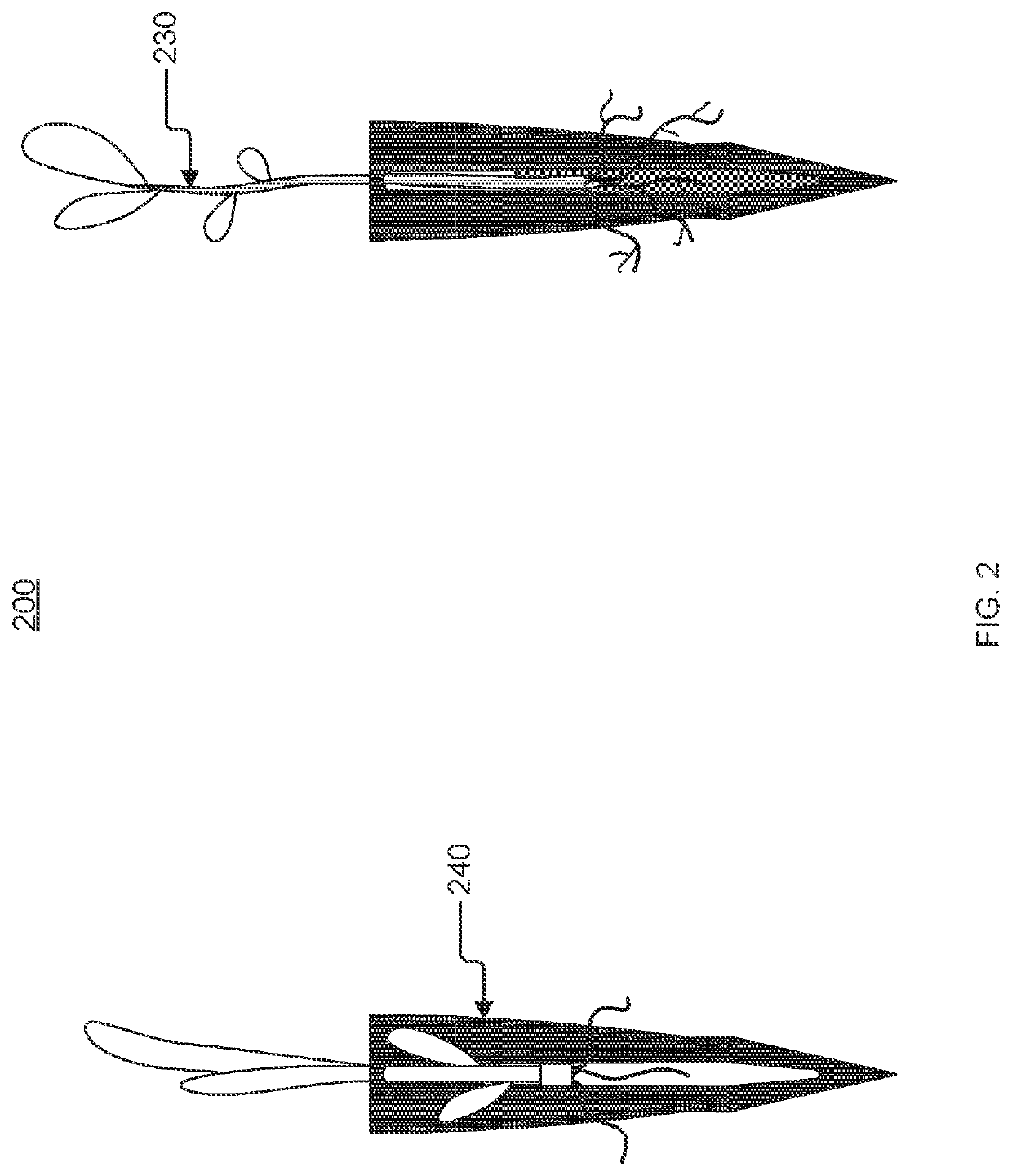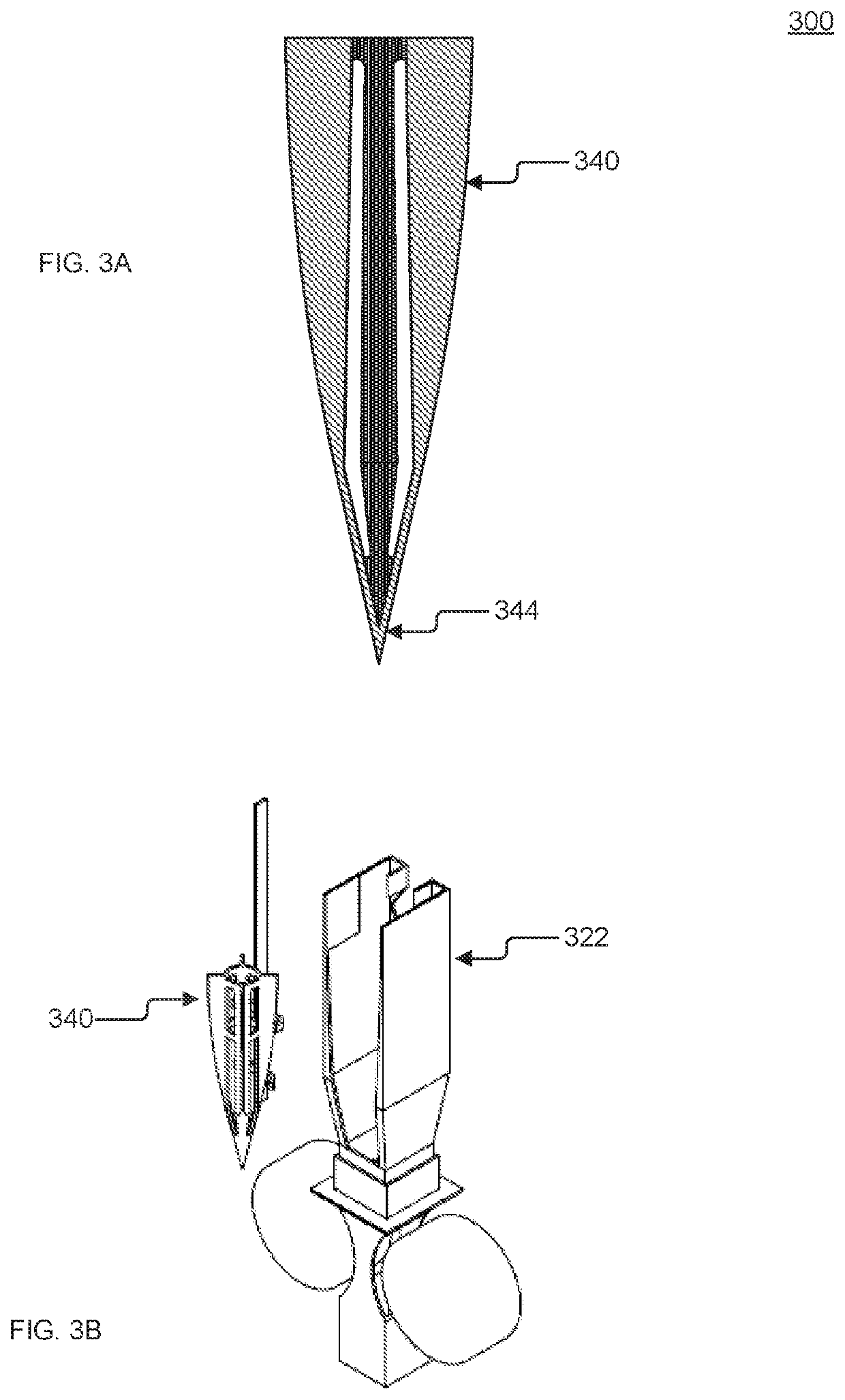Systems and Methods for Planting Flora and Fauna Through Drone Delivery
a technology of planting flora and fauna and drones, applied in the direction of planting, planting, launching weapons, etc., can solve the problems of affecting the survival of coastal vegetation, and losing nine acres of coastal wetlands each day, so as to promote the regrowth of coastal vegetation, reduce the required time and labor, and improve the distribution of erosion-preventing organisms
- Summary
- Abstract
- Description
- Claims
- Application Information
AI Technical Summary
Benefits of technology
Problems solved by technology
Method used
Image
Examples
Embodiment Construction
[0081]The present disclosure provides generally for an automated system of planting flora and fauna and other organisms, particularly aquatic flora, such as mangroves, Spartina grass, and sea grass, and other aquatic organisms, such as oysters. According to the present disclosure, drone delivery of pods with flora or fauna may allow for quick and accurate planting. Automated delivery may replace manual dispersal and may supplement natural growth, which may be necessary to combat erosion.
[0082]In the following sections, detailed descriptions of examples and methods of the disclosure will be given. The description of both preferred and alternative examples, though thorough, are exemplary only, and it is understood to those skilled in the art that variations, modifications, and alterations may be apparent. It is therefore to be understood that the examples do not limit the broadness of the aspects of the underlying disclosure as defined by the claims.
Glossary
[0083]Seedling box: as used...
PUM
 Login to View More
Login to View More Abstract
Description
Claims
Application Information
 Login to View More
Login to View More - R&D
- Intellectual Property
- Life Sciences
- Materials
- Tech Scout
- Unparalleled Data Quality
- Higher Quality Content
- 60% Fewer Hallucinations
Browse by: Latest US Patents, China's latest patents, Technical Efficacy Thesaurus, Application Domain, Technology Topic, Popular Technical Reports.
© 2025 PatSnap. All rights reserved.Legal|Privacy policy|Modern Slavery Act Transparency Statement|Sitemap|About US| Contact US: help@patsnap.com



